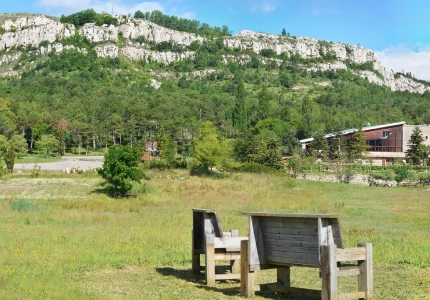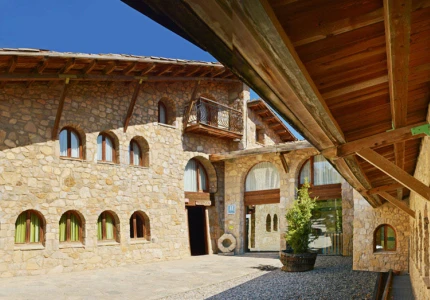And now comes the million dollar question… What brought Gaudí to Berguedà? We tell you!
At the beginning of the 20th century, Mr. Eusebi Güell Bacigalupi created the first Portland cement factory. Güell commissioned Antonio Gaudí to design the Chalet del Catllaràs, to serve as a home for the workers and engineers of the mines.
While his work in the area lasted, Gaudí stayed at the house of Mr. and Mrs. Artigas, who were the owners of a prosperous textile factory. In gratitude for their hospitality, the renowned artist gave them the design of a garden on land they had next to the house.
- The Artigas gardens, where nature and architecture go hand in hand . The town of Lillet | Distance from El Jou Nature: 18 km
As we have already mentioned, the gardens were within the grounds of the Artigas family, specifically in the so-called Magnesia Fountain, on the Llobregat riverbed.
The similarities with Park Güell, which the architect was building at the time in the Gracia neighborhood of Barcelona, are more than visible. Obviously on a smaller scale, but with great stylistic and structural similarities. Gaudí asked several masons who had worked in Park Güell to go and carry out this work.
The result is gardens that coexist in harmony with nature, with several perfectly integrated constructions such as an artificial grotto reminiscent of the one in the Ciudadela park in Barcelona. It is a garden designed for walks in which elements stand out such as a Glorieta that serves as a viewpoint, the Cave (where the Magnesia Fountain was) and the waterfall, made with stones creating the renowned “trencadís” that is so often can be seen in many of the architect's works. Without forgetting the picnic area and the coiled snakes on the path of the Glorieta.
Undoubtedly an enigmatic corner where nature and architecture mix in perfect harmony. A place to get lost and find yourself among the fountains, benches, bridges and railings with the Llobregat as a witness.
- Asland Cement Museum . Castellar de n'Hug | Distance from El Jou Nature: 30 km
Although this factory has been closed for about three decades, the remains that can still be seen today perfectly narrate the majesty of one of the most spectacular factory complexes of Catalan industrialization. And in a privileged natural environment.
You can visit the Museum and learn about the history of this factory, which operated from 1904 to 1975, in an entertaining and educational way. The factory and its surroundings were declared a cultural asset of national interest in the category of historical monument in 2005.
It was in charge of supplying cement at a very important moment of growth in industrial society, when it was necessary to create new homes and infrastructures and new production spaces.
- The cement train . The town of Lillet | Distance from El Jou Nature: 18 km
This railway was the smallest of the public use railways in Spain as it had a gauge of 60 cm. This Cement Train was built by the Compañía General de Asfaltos and Portland Asland to transport cement from the factory (located in Clot de Moro) to Guardiola de Berguedà. In this town it connected with the Catalan Railways.
In the early years of the 20th century, the railway only transported cement and materials from the factory, but years later, specifically in 1914, it began to provide a public passenger service.
In 1963 this railway made its last trip. Until 2005, when it was put back into operation thanks to the reconstruction of part of the route, specifically 3.5 kilometers of great beauty. The journey takes about 20 minutes and is made by a diesel locomotive that transports a maximum of four cars with a capacity for 25 passengers each.
The Jou Nature is very close to all these towns and settings that guard suspiciously this part of the industrial and architectural history of Catalonia. There is nothing we like more than hosting the "curious and curious" who enjoy discovering all these secrets during their escapades.















